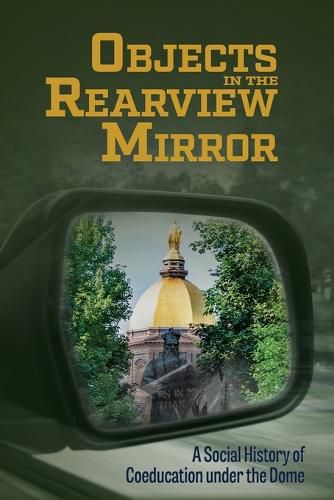Readings Newsletter
Become a Readings Member to make your shopping experience even easier.
Sign in or sign up for free!
You’re not far away from qualifying for FREE standard shipping within Australia
You’ve qualified for FREE standard shipping within Australia
The cart is loading…






This title is printed to order. This book may have been self-published. If so, we cannot guarantee the quality of the content. In the main most books will have gone through the editing process however some may not. We therefore suggest that you be aware of this before ordering this book. If in doubt check either the author or publisher’s details as we are unable to accept any returns unless they are faulty. Please contact us if you have any questions.
It all began more than a generation ago. The first coeds were a combination of daughters of alumni, transfer students (most from Saint Mary’s), and young women who just wanted to be a part of this new tradition. … It is their journey chronicled through the reflections on coeducation … on this ‘maiden voyage’ and its impact on their lives. - Rev. Theodore M. Hesburgh, CS., President Emeritus, February 7, 2007
In the fall of 1972, the University of Notre Dame du Lac admitted 365 undergraduate women who changed the institution’s complexion forever. These female pioneers soon found themselves moving into hastily converted dorms in this previously all-male stronghold … and wondering, Now what?
Through reflections on the first five years of coeducation by many members of the Notre Dame family, Objects in the Rearview Mirror answers that question.
This social history explores the experiences that drove these women’s collegiate lives: a challenging atmosphere of heavy academics, relationships, drinking, drugs, sex … and football. Woven through the personal stories are relevant facts and figures, insights from men affected by the university’s coeducation decision, and interviews with key administrators.
With more than 150 contributors, Objects in the Rearview Mirror documents this transformative path at Notre Dame and the roads traveled a half-century later: It was the best of times, it was the worst of times […] we had everything before us.
$9.00 standard shipping within Australia
FREE standard shipping within Australia for orders over $100.00
Express & International shipping calculated at checkout
This title is printed to order. This book may have been self-published. If so, we cannot guarantee the quality of the content. In the main most books will have gone through the editing process however some may not. We therefore suggest that you be aware of this before ordering this book. If in doubt check either the author or publisher’s details as we are unable to accept any returns unless they are faulty. Please contact us if you have any questions.
It all began more than a generation ago. The first coeds were a combination of daughters of alumni, transfer students (most from Saint Mary’s), and young women who just wanted to be a part of this new tradition. … It is their journey chronicled through the reflections on coeducation … on this ‘maiden voyage’ and its impact on their lives. - Rev. Theodore M. Hesburgh, CS., President Emeritus, February 7, 2007
In the fall of 1972, the University of Notre Dame du Lac admitted 365 undergraduate women who changed the institution’s complexion forever. These female pioneers soon found themselves moving into hastily converted dorms in this previously all-male stronghold … and wondering, Now what?
Through reflections on the first five years of coeducation by many members of the Notre Dame family, Objects in the Rearview Mirror answers that question.
This social history explores the experiences that drove these women’s collegiate lives: a challenging atmosphere of heavy academics, relationships, drinking, drugs, sex … and football. Woven through the personal stories are relevant facts and figures, insights from men affected by the university’s coeducation decision, and interviews with key administrators.
With more than 150 contributors, Objects in the Rearview Mirror documents this transformative path at Notre Dame and the roads traveled a half-century later: It was the best of times, it was the worst of times […] we had everything before us.